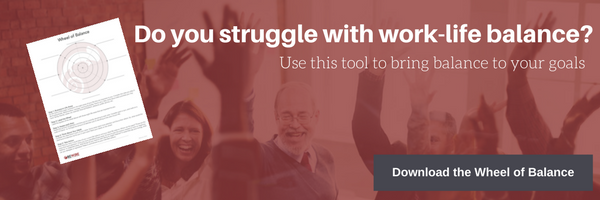
This period of time between Thanksgiving and the New Year is quite special. There’s a sense of excitement and possibility, lots of parties, time with family and friends, old and new traditions, memorable smells, and good food. Despite all of the good cheer (and sometimes because of it), many of us find ourselves with holiday wellness complaints. The three common health-related complaints heard around water coolers in December are:
- stress
- weight gain
- light deprivation
This week on The WireBoard, we’ll look a little closer at these three common holiday complaints and I’ll share two approaches to solving them.
Stress: According to the American Psychological Association, the holidays are stressful for the majority of us. Finding the perfect gift, finding the time to find the perfect gift, making travel plans, stay-at-home plans, or having-guests-stay-at-your-home plans, cooking, cleaning, hanging out with relatives (author and spiritual mystic teacher Ram Dass famously said, “If you think you’re so enlightened, go spend a week with your family.”), being alone, or being in a crowd of strangers… all of these and more ramp up the stress level. And, just as a reminder, stress is not good for your physical health. It negatively affects heart rate, blood pressure and inflammation. Mentally, stress activates the lizard brain making us less likely to be able to depend on our pre-frontal cortex (the seat of reason and rationality).
Weight Gain: This time of year most of us have at least one office party to attend, a friendly gathering or two, big holiday meals and treats and some delicious-but-highly-caloric beverages. And all of this indulging is happening at a time when light levels are lowest and we’re least likely to get outside or exercise. Studies have shown that the average person adds an extra pound every holiday season which is not likely to be shed after the holidays.
Light Deprivation: The days have been getting shorter for the past six months and we’ve just reached the Winter solstice—the shortest day of the year (December 21). And this reduced daylight has an impact. Nearly 10% of all people (especially those who live in northern areas) report negative effects on their mood as a result of diminished daylight. “Winter blues” are the mild term for the feeling of fatigue and loss of energy some people experience in the darkest months. For some, this mood drop is more dramatic, falling under the condition labelled by experts as Seasonal Affective Disorder (SAD). The science behind winter blues and SAD is not fully understood, but involves the way that shorter periods of light affect our production of serotonin and melatonin — which in turn affect our mood and sleep patterns. https://blogs.scientificamerican.com/a-blog-around-the-clock/seasonal-affective-disorder-the-basics/.
With all of these compounding challenges this month, we’re offering up two simple hacks to help you rewire your brain for a more enjoyable holiday.
Rewire Hack #1: Mindful Eating
The holidays are a recipe for mindless eating. “Mindless eating” is eating without being conscious of the fact that we’re eating, why we’re eating or even what food we’re putting in our mouths. When we add heavy-duty socializing to food consumption, our ability to tune into the experience of eating becomes quite difficult. We hardly even realize how much we’re eating over the course of a couple hours at a party.
Applying mindfulness to our eating is a good way of reducing stress and increasing enjoyment of our food — all while simultaneously keeping us from eating more than we should.
- Be aware of the motivating factor behind your decision to eat. Are you hungry, bored or feeling socially awkward? If you’re not actually hungry, can you find something else to do instead of eat?
- Look at your food before you eat it. Notice texture, color, size and shape. This step doesn’t need to be pro-longed; you don’t need to make your dinner guests awkward while you stare at your food! Just a quick look over your plate before you dig your fork in will do. Smell your food. What aroma, if any, does it give off before you put it in your mouth? Again, it doesn’t need to be too involved. You don’t need to raise your plate to your nose; just unceremoniously become aware of the aroma arising from your plate.
- Chew your food very slowly noticing all of the taste sensations (sweet, salty, sour, and bitter) and textures (crunchy, smooth, etc) and sounds. When you first put your food in your mouth, notice the taste and textures of the food on the tongue. Then begin to chew. Notice if the tastes change while you’re chewing. Also notice how the sensation to swallow your food begin as soon as you begin to chew.
- Pause between bites. In our busy world, we often begin to approach everything we do with a sense of urgency. But we don’t need to eat that way, especially in a social setting. Slow down the process of eating.
- Notice when you no longer feel hungry take this moment to stop eating. The slower and more mindful you are with your eating, the more accurately you can determine when you’re no longer hungry.
Rewire Hack #2: Lightbox Therapy
If you think your days are short in the winter, be grateful you don’t live in northern Alaska. (If you do live in northern Alaska, you have my sincere sympathy and admiration). The folks in Barrow, Alaska (the northernmost town in the state) go without any sun for 67 days starting in mid-December!
Some of you may fondly remember the terrific ‘90s sitcom Northern Exposure set in the fictional town of Cicely, Alaska. In the fifth season, the show takes on the long dark days of an Alaskan Winter. The main character, a doctor, begins prescribing light therapy for the residents who are experiencing mood irregularities from the continual darkness.
Lightbox therapy has been around for many decades and is a great way to manage the winter blues. Just by exposing yourself to extra light in the morning you can trick your brain into thinking that the day is longer than it really is. Light regulates our circadian rhythms, which manage our sleep and wake cycles.
My family has been using a light box for about two decades and we find that it really helps reduce the blahs that sometimes visit in mid to late fall. The key to effective light box use is timing and duration. To combat winter blues and help you get your day off to a good start, you want to expose yourself to as much morning light as possible. Physicians suggest that you get at least 30 minutes of exposure from a light box with at least 10,000 lux (full spectrum minus the UV). And they caution that while for most people the light is completely safe and effective, you should check with your doctor before you purchase and start using a light box. (http://www.mayoclinic.org/tests-procedures/light-therapy/details/risks/cmc-20197423)
Thirty minutes of time in front of a light might seem like a lot, but one solution is to set up a light box in the area where you spend a lot of time in the morning. I recently installed shelves in my kids’ bathrooms so, while they are taking forever in the morning to get ready for school, they can get some light exposure too. I heard that one Harvard sleep researcher had a light box custom built into his shower wall.
Wellness is a great gift to give yourself, your loved ones, friends and colleagues this holiday season. You can order light boxes online and they come in all shapes and sizes. And mindfulness is free and available anytime or anywhere. This article is free as well and can be shared with as many people as could benefit from the gift of wellness.
Our sincere hope is that you are able to incorporate approaches like these into your rewired holiday habits. If you have any questions or comments on this, please let us know in the comments section or drop us a message.





